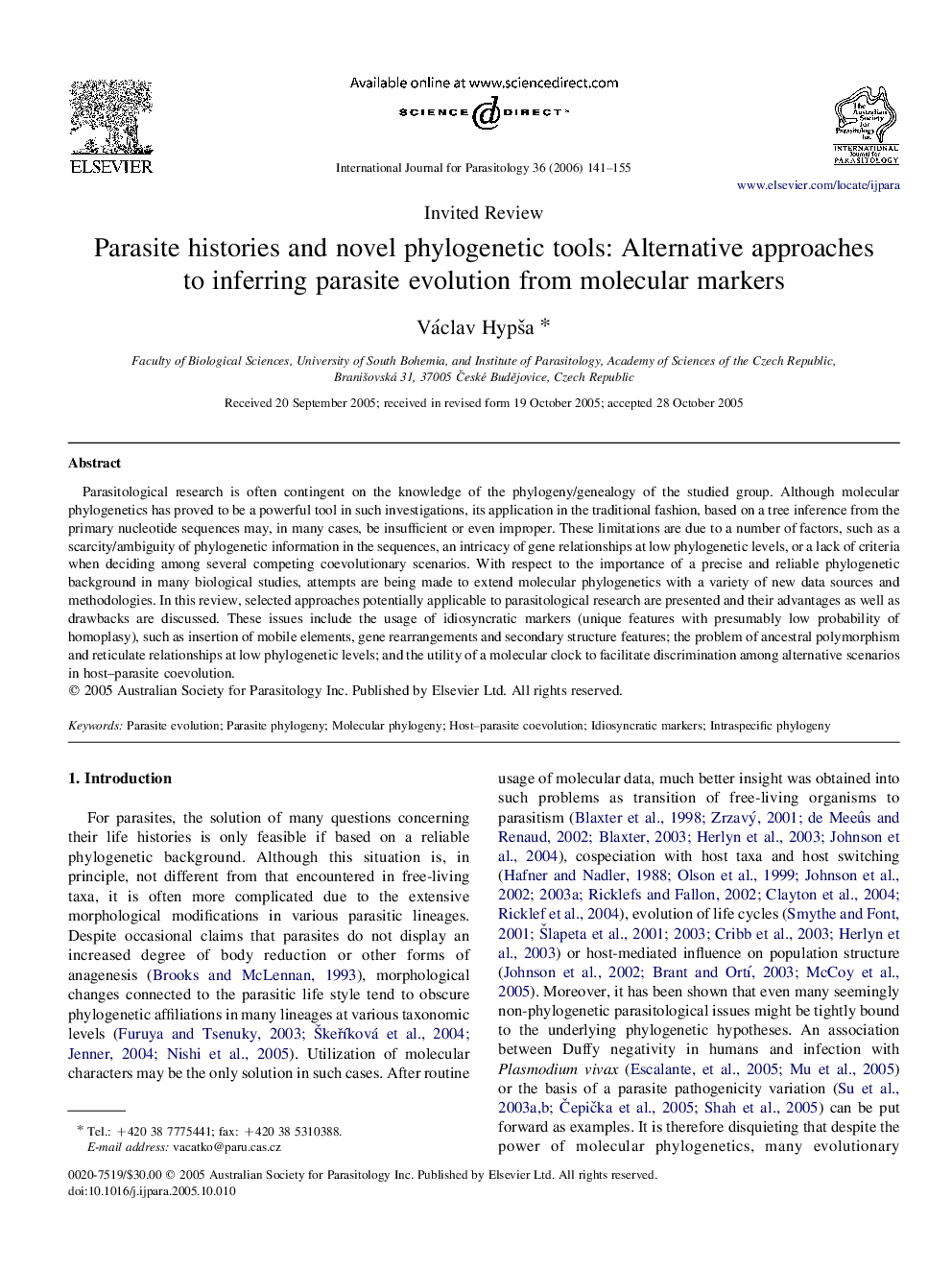| Article ID | Journal | Published Year | Pages | File Type |
|---|---|---|---|---|
| 2437036 | International Journal for Parasitology | 2006 | 15 Pages |
Parasitological research is often contingent on the knowledge of the phylogeny/genealogy of the studied group. Although molecular phylogenetics has proved to be a powerful tool in such investigations, its application in the traditional fashion, based on a tree inference from the primary nucleotide sequences may, in many cases, be insufficient or even improper. These limitations are due to a number of factors, such as a scarcity/ambiguity of phylogenetic information in the sequences, an intricacy of gene relationships at low phylogenetic levels, or a lack of criteria when deciding among several competing coevolutionary scenarios. With respect to the importance of a precise and reliable phylogenetic background in many biological studies, attempts are being made to extend molecular phylogenetics with a variety of new data sources and methodologies. In this review, selected approaches potentially applicable to parasitological research are presented and their advantages as well as drawbacks are discussed. These issues include the usage of idiosyncratic markers (unique features with presumably low probability of homoplasy), such as insertion of mobile elements, gene rearrangements and secondary structure features; the problem of ancestral polymorphism and reticulate relationships at low phylogenetic levels; and the utility of a molecular clock to facilitate discrimination among alternative scenarios in host–parasite coevolution.
